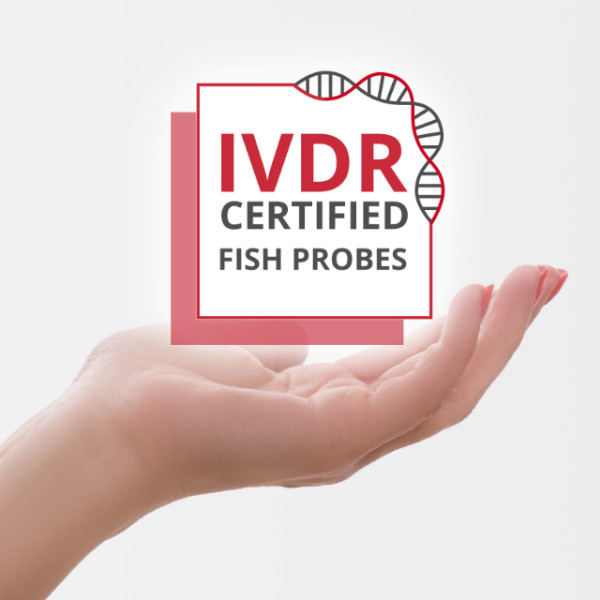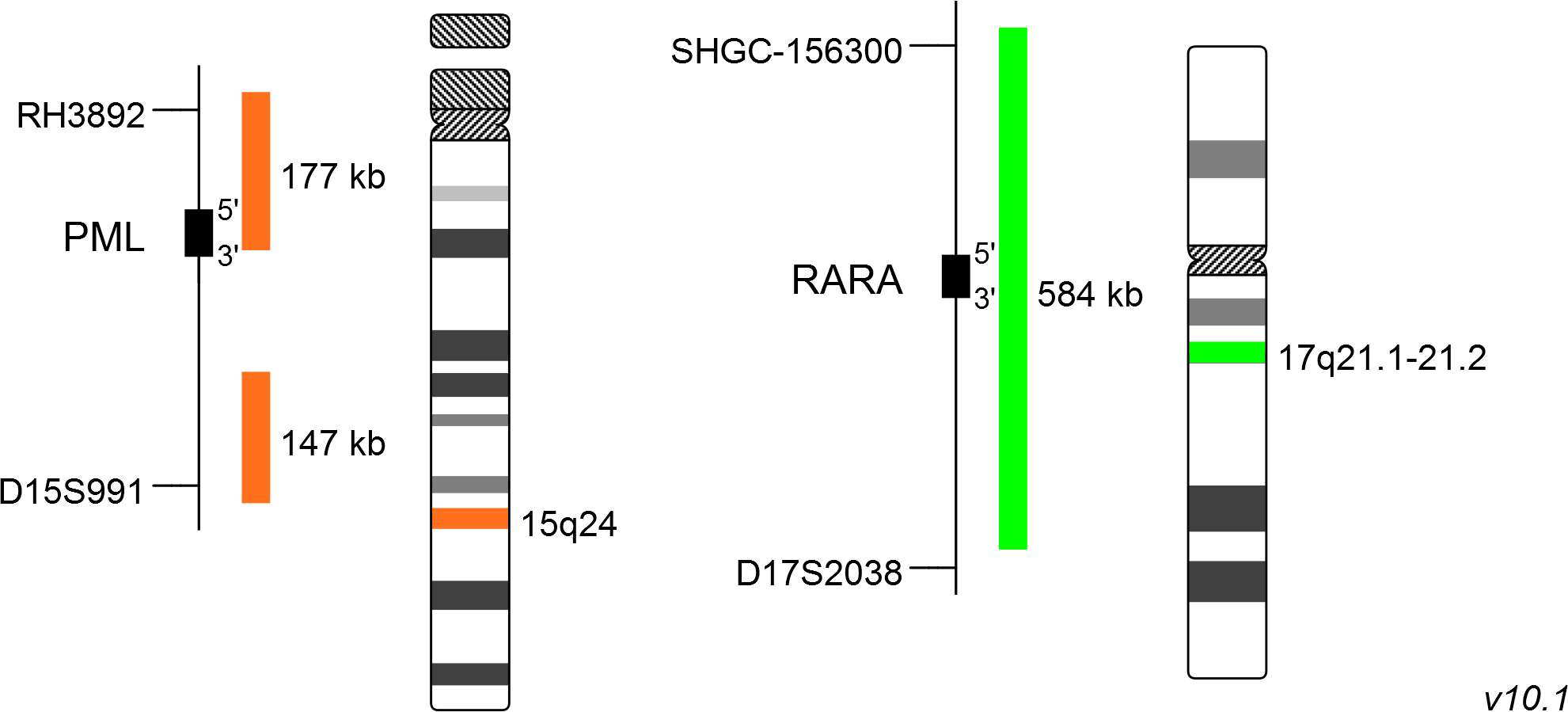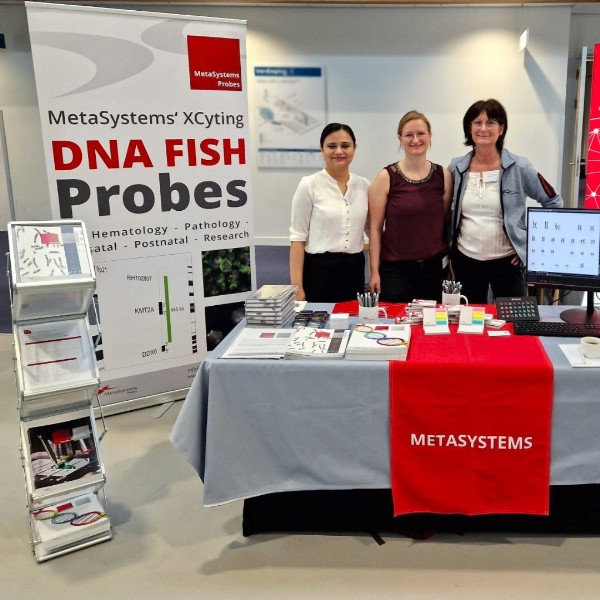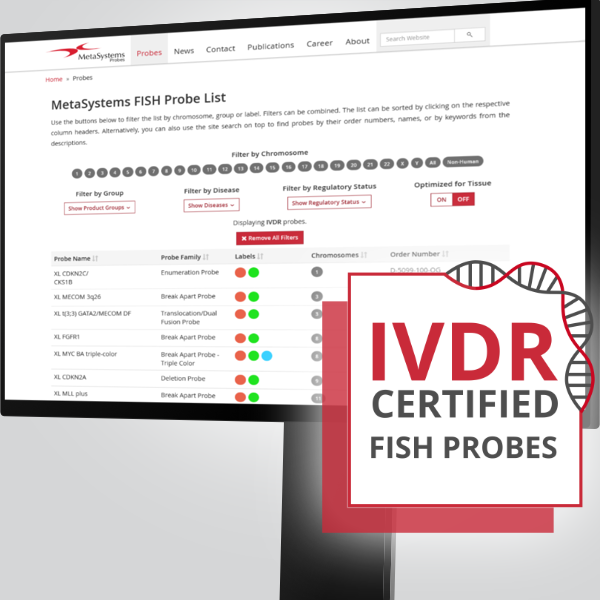Several recurrent balanced translocations and inversions, and their variants, are recognized in the WHO category acute myeloid leukemia (AML) with recurrent genetic abnormalities. Furthermore, several cytogenetic abnormalities are considered sufficient to establish the WHO diagnosis of AML with myelodysplasia-related features if 20% or more blood or marrow blasts are present.
AML M3 and AML M3v are characterized by a reciprocal translocation between the long arm of chromosome 15 and the long arm of chromosome 17. This translocation leads to a rearrangement of the PML gene situated on chromosomal band 15q24 and the RARA gene situated on band 17q21. The PML-RARA rearrangement has gained major clinical importance because, in combination with all-trans retinoic acid (ATRA) and conventional anthracycline and cytarabine based chemotherapy, it leads to an improved prognosis in this subgroup of AML.
Clinical Applications
- Acute Myelogenous Leukemia (AML)











